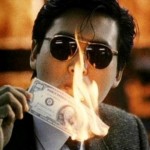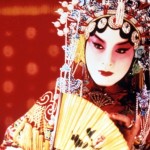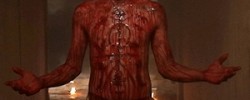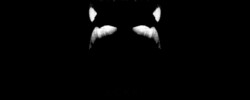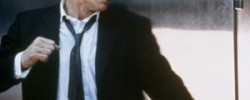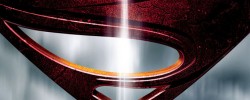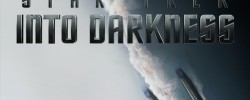
TIFF’s A Century of Chinese Cinema Review: The Arch (1969)
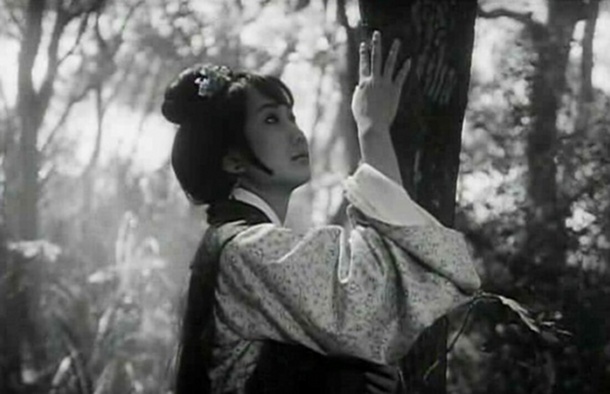
Cast: Lisa Lu, Roy Chiao, Szu-yun Chen
Director: Cecile Tang Shu Shuen
Country: China
Genre: Drama
Editor’s Notes: The following review of The Arch is part of our coverage for TIFF’s A Century of Chinese Cinema which runs from June 5th to August 11th at TIFF Bell Lightbox. For more information of this unprecedented film series visit http://tiff.net/century and follow TIFF on Twitter at @TIFF_NET.
Besides its setbacks—low grade film stock, repetitious music, narrative imbalance—Cecile Tang Shu Shuen’s The Arch (1969) remains a visual masterpiece, whose formal rhetoric profoundly speaks to the inner dimensions of human existence. A film, in her words, about the “interior feeling of woman,” The Arch uses techniques and special effects, such as zooms and superimpositions/dissolves, to express the ineffable qualities of experiencing life as an isolated and repressed young woman in China during the difficult times of the Cultural Revolution.
Banned at the time for being too artistic and socially conscious, the film had a strong but underground impact on the filmmakers who would become known as the fifth generation (graduates in 1982 of the Beijing film academy). In a sense, Shu Shuen’s highly experimental film serves as a precursor to the artistic and formal directions that fifth generation filmmakers such as Chen Kaige, Zhang Yimou, and Tian Zhuangzhuang would take. What’s more, Shu Shuen’s working relationship with burgeoning Taiwanese filmmakers—then just students—helped pave the road for the Taiwanese new wave.
Besides its setbacks—low grade film stock, repetitious music, narrative imbalance—Cecile Tang Shu Shuen’s The Arch (1969) remains a visual masterpiece, whose formal rhetoric profoundly speaks to the inner dimensions of human existence.
I suppose that the formal distinction between Shu Shuen and other Chinese filmmakers from this period is due to her film training at USC in America, where she—unlike members of the fourth generation who were trained in a specifically Soviet style—was privileged to view all kinds of foreign films. The Bengali filmmaker Satyajit Ray became her favourite director, and borrowing Ray’s cinematographer, Subratra Mitra, Shu Shuen was able to render a film with a sense of interiority, simplicity, and austerity akin to the films of Ray (The Apu Trilogy). Consequently, the film became—in the words of Noah Cowan (Artistic Director for TIFF Bell Lightbox)—a UFO of Chinese cinema. With the director in attendance for a Q&A, TIFF’s Century of Chinese Cinema retrospective received the unprecedented 35mm archival print from the Hong Kong Film Archive. Though she gives herself less credit than she deserves, comments by Cecile Tang Shu Shuen should help contextualize this foreign film for universal audiences.
Though it tells of the conditions and role of women in Chinese history, The Arch focuses on the schoolteacher, Madam Tung (Lisa Lu), a widow whose town acknowledged virtuosity has gained her the honour of an arch commissioning. Repressing her love for Captain Yang (Roy Chiao-Hung), the woman, though fulfilling a positive role in the town, remains lonely and disconnected, suffering from an inner turmoil between town respect and personal desire.

Shu Shuen opens and closes the film with the peaceful and rounded—arch-like—mountains of China. These figures become a formal expression of the tranquil and natured role of the arch. Following the opening shot of mountains, a 3-shot montage in the vein of Lev Kuleshov indicates—through the building of images—the building of an arch: the first shot stares up a steep hill, while canted to the right; the second straight-on, and the third to the left. This early display of a formal style that conveys unrepresentable and metaphorical material incites the viewer to pay close attention to how the visual images truly tell the story. In her words, the subject matter is “very cinematic,” and I believe the formal techniques I’m about to espouse will give clarity to how this could be.
Following this 3-shot arch, Shu Shuen contextualizes the setting through montage; in about thirty seconds the viewers have a sense of the historical moment they are invited to visit. Subsequently, an austere and slow-paced rhythm introduces us to the main characters. From this moment on, the film shifts between elliptical and montage editing, serenity and disturbance, peace and war. This yin and yang gives expression to the struggle of Madam Tung, as she experiences emotional shifts in response to the happenings around her. Like other women at the time, and I would argue all humans at some point or another, Madam Tung’s thoughts and emotions get in the way of her capability to experience reality; she is, instead, lost in her own thoughts and memories, which only bring her misery and despair. For example, a montage of the widow and the captain touching hands over a cockroach give voice to the inner conflict she experiences; in the end, she restrains her feelings, and this memory of repression haunts her following days.
Now, despite the visual brilliance of the film, the narrative is at times unclear and the dialogue—perhaps due to viewing a subtitled production—doesn’t quite match the brevity of the woman’s circumstances.
In addition to the conflicting visual rhythm, Shu Shuen utilizes the zoom to peer into and out of her characters. Almost every shot, in fact, has a slow and slight zoom; figural changes that are barely sensible become an instrument for illustrating the unspeakable aspects of human emotion. Though at times it is difficult to tell if Shu Shuen utilizes tracking or not, the zooms are typically slight enough that the changes in focal length do not distort the image; the steady but intervallic changes in shot scale add a human element to every scene. It’s as if Shu Shuen is telling us to open our eyes and look closer. I find this visual style particularly appropriate given the content of the film. Forgoing the classical Hollywood style of shot-reverse-shot editing, many scenes open and close simply in and through the zoom. For example, when the captain writes a love poem for the lady, the camera moves slightly towards him, eliciting the emotional engagement between the man and his action. At this point, the lady opens the door, and the camera zooms out, rather than cutting, to include her in what is now a two-shot, thus eliciting a disruption of feeling likely experienced as a suppression of emotions—the tension between characters. Finally, after she leaves, the camera zooms back in, conveying the ongoingness of this conflict, one that the woman is experiencing but also the man.

When Shu Shuen does use editing, it is primarily with dissolves, some of which remain on screen—creating a superimposition in the vein of Bergman’s Persona (1966)—for long periods of time. These dissolves that blend images lend expression to the blending of solemnity and grievance, feelings which become difficult to separate given the overriding sense of uncertainty she is undoubtedly experiencing. These dissolves shed light on her inner thoughts, feelings, and memories, as they are typically longer when the superimposition shows that she is lost in her own thoughts. As a result, her thoughts—a subject matter highly unrepresentable—is given a formal expression that metaphorically shores up a sense or appreciation of her struggle. At one point, a beautiful shot of an apricot dissolves into a shot of the romantically disturbed couple riding a horse into town. At another point, a longer dissolve—matched with a superimposition of Madam Tung’s facial expression—shows the schoolteacher deep in thought while watching over the children in her class. The joyful freedoms of the energetic children is blended with the anguish now literally overlooking it.
Lastly, Shu Shuen utilizes several freeze frames to suspend the viewer’s experience of the characters’ emotions. A near-end freeze frame resembling Truffaut’s ending of The 400 Blows (1959) gives tension to the final shot. The viewer wonders whether her suffering has forced her to commit suicide or if she continues to live despite her troubles.
Just before this, the climactic scene utilizes all the above mentioned formal techniques to convey an unforgettably haunting image of the culmination of her suffering. Beginning with a straight-on shot of Madam Tung, the film dissolves into a lasting superimposition that displays her face underneath past events with the Captain, such as the cockroach scene. Her memories and thoughts become more and more difficult to bear; the visual and aural—musical—rhythm accelerates and an intellectual montage is formed; zooms, canted angles, and overlapping editing cause a temporal disruption; a chicken is ultimately sacrificed—her conflict expressed through an act of killing in the search of resolve. Effectively, everything is enmeshed; the blending of objects, shifts in rhythm, and shifts in shot scale all give light to the cinematic sensibilities of The Arch.
Now, despite the visual brilliance of the film, the narrative is at times unclear and the dialogue—perhaps due to viewing a subtitled production—doesn’t quite match the brevity of the woman’s circumstances. Consequently, some of the derivative lines of dialogue, which perhaps made sense in the time and place it was borne out of, trivialize the careful attention to interiority that the film so well expresses through image. Moreover, the music—a constant drone of a one man band—competes with the visual images, and effectively dismounts moments of visual transcendence that may otherwise be supported. When asked about this, Shu Shuen herself stated that she would change the music if she made the film again, as she finds it far too repetitious, a complaint I can’t help but share. For these reasons, the film doesn’t quite fit the description of a masterpiece. While visually incredible, the overall impression of the film is rather subdued. In spite of this, The Arch is unquestionably a significant artistic achievement of Chinese cinema, and an important precursor to the more art-driven new wave films that appeared in China a decade and a half later.
Related Posts
![]()
Kamran Ahmed
![]()
Latest posts by Kamran Ahmed (see all)


